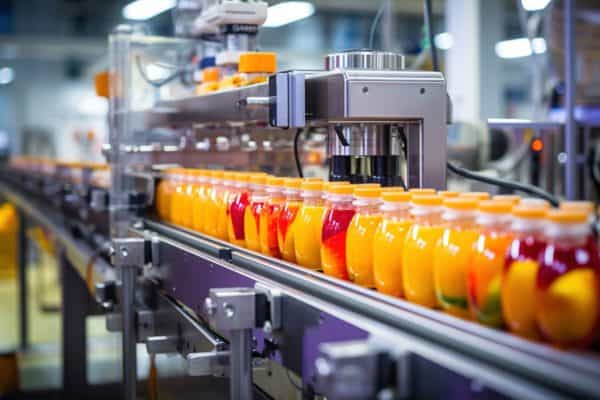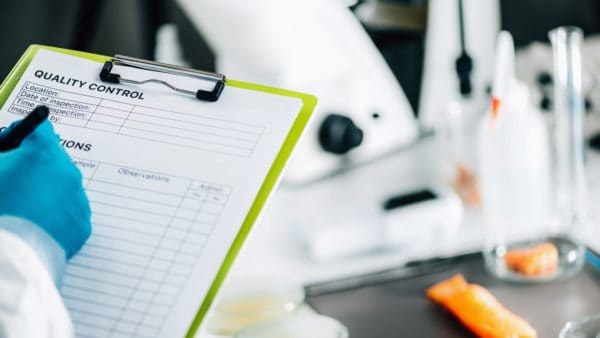Food inspection systems play a critical role in safeguarding consumer health by ensuring the safety and quality of food products. These systems involve detecting and eliminating contaminants, preventing foodborne illness, and promoting public health. Through rigorous standards and procedures, food inspection helps to maintain trust in the food supply chain, from farm to fork.
Understanding Food Inspection
Food inspection encompasses a broad range of activities, including examining raw materials, monitoring production processes, and evaluating finished products. It also involves assessing food handling and storage practices to ensure compliance with safety regulations. Various entities, including government agencies, third-party organizations, and internal quality control departments within food production companies, carry out these inspections.
At the heart of these inspection processes is detecting and removing foreign objects and contaminants that can pose risks to consumer health. This is where technologies like the basics of food metal detector come into play. These devices are designed to identify and reject food products that contain metal particles, which could result from broken machinery or other sources of contamination during production. Metal detectors are just one example of the sophisticated tools used in the food industry to ensure products meet safety standards.
The Role of Food Metal Detectors
Food metal detectors are essential in food inspection, providing an effective solution for detecting and eliminating metallic contaminants. These devices generate a magnetic field that can identify metal particles in food products as they pass through the detection area. When metal is detected, the system automatically rejects the contaminated product, preventing it from reaching consumers.
The sensitivity of these detectors is adjustable, allowing for the identification of various sizes of metal particles, including very fine particles that other inspection methods might overlook. This adaptability ensures that food producers can tailor the inspection process to the specific requirements of different products, enhancing the overall effectiveness of food safety protocols.

Regulatory Framework and Standards
Food safety regulations play an essential role in defining the standards for food inspection. Governments worldwide have established comprehensive laws and guidelines to ensure that food producers adhere to best practices in food safety. These regulations often specify the inspection processes that must be conducted, including using metal detectors and other technologies to detect contaminants.
In addition to government regulations, international standards guide food safety practices. Organizations such as the Codex Alimentarius Commission and the International Organization for Standardization (ISO) provide global guidelines and standards that help harmonize food safety measures. Compliance with these standards helps protect consumer health and facilitates international trade in food products.
Advances in Food Inspection Technology
Food inspection is constantly evolving, with new technologies being developed to enhance safety protocols’ effectiveness. Beyond metal detectors, the industry now employs a variety of advanced tools, including X-ray inspection systems, optical sorting equipment, and spectroscopy-based analyzers. These technologies accurately detect various contaminants, including glass, plastic, stones, and chemical residues.
Artificial intelligence (AI) and machine learning also make significant inroads into food safety. These technologies are used to analyze inspection process data, predict potential safety issues, and optimize production practices. By leveraging big data and AI, food procedures can proactively address safety concerns, reduce the risk of contamination, and improve overall product quality.
Training and Education
Ensuring the effectiveness of food inspection systems requires more than just advanced technology. It also demands a well-trained workforce capable of implementing and managing these systems. Continuous training and education for food production and inspection employees are crucial. This includes understanding the principles of hazard analysis and critical control points (HACCP), a systematic approach to identifying, evaluating, and controlling food safety hazards.
Educational programs and certifications in food safety provide personnel with the knowledge and skills needed to effectively use inspection technologies, interpret results, and take corrective actions when necessary. Such training ensures that all individuals in the food supply chain know their roles and responsibilities in maintaining food safety.
Challenges in Food Inspection
While food inspection systems have significantly improved food safety, several challenges remain. One of the main issues is the diversity of food products and production methods, which can make standardizing inspection processes difficult. Additionally, the globalization of the food supply chain introduces new risks, as products from different parts of the world may be subject to varying quality control and safety standards.
Adapting to these challenges requires a multifaceted approach that includes ongoing research and development, international cooperation, and adopting flexible, technology-driven inspection processes. By addressing these issues, the food industry can continue to enhance the safety and quality of products, thereby safeguarding consumer health.
The Importance of Consumer Awareness

Beyond the efforts of food producers, consumer awareness plays a vital role in food safety. Educated consumers are better equipped to make informed choices about the foods they purchase and consume. Public education campaigns and labelling initiatives can help disseminate information about food safety practices, such as the importance of proper storage, handling, and food preparation at home.
Consumers also have a part to play in advocating for stricter food safety regulations and supporting companies prioritizing quality and safety in their products. Through collective action, consumers can influence the food industry to maintain high food safety and quality standards.
Integrating Sustainability into Food Inspection
As the world becomes increasingly focused on sustainability, food inspection systems are adapting to ensure safety and promote environmentally friendly practices. Sustainable food inspection involves minimizing waste, optimizing resources, and using eco-friendly technologies. This shift is essential for reducing the food industry’s environmental footprint while maintaining high safety standards. Innovative approaches, such as reusable packaging inspections and energy-efficient inspection machinery, are being integrated into standard practices, reflecting the industry’s commitment to sustainability.
Final Thoughts
Safeguarding consumer health through food inspection systems is a complex but crucial aspect of the food industry. The industry strives to prevent contamination and ensure the safety of food products by using advanced technologies, such as metal detectors, and adherence to strict regulatory standards. Despite the challenges, the ongoing evolution of inspection methods and the commitment of all stakeholders to quality and safety continue to enhance consumer trust in the food supply. As technology advances and global cooperation strengthens, the effectiveness of food inspection systems in protecting public health is expected to grow, ensuring that the food we eat is not only delicious but safe.
 Gearfuse Technology, Science, Culture & More
Gearfuse Technology, Science, Culture & More


